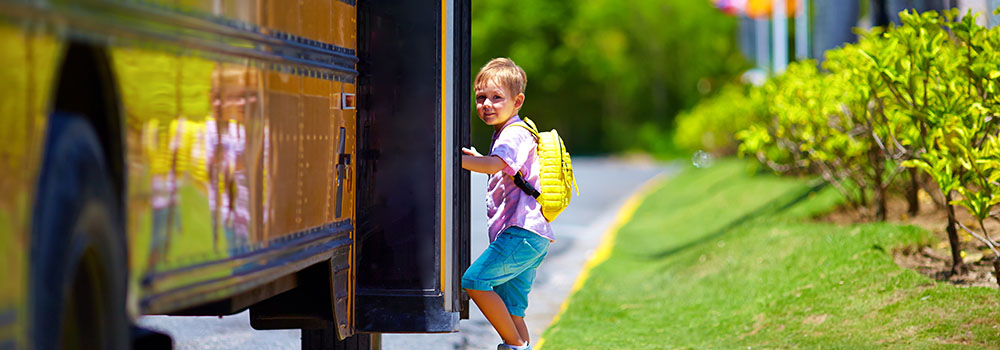
By Cassandra R. Davis, Sarah R. Cannon, Sarah C. Fuller, and Rex Long
Implications for Public Health
Disasters can destroy school buildings and disrupt routines for extended periods of time. Mental health services should be provided in schools in the immediate aftermath of disasters, as well as in the longer term.
Reopening schools is a crucial step for many communities recovering from a disaster. Even after schools are operating regularly, the disaster can continue to affect students and teachers. Returning to classroom routines can provide a sense of normalcy and support broader recovery efforts.
The U.S. mainland receives an average of 18 direct hurricane strikes per decade. These storms frequently affect the most vulnerable populations and fragile structures, including schools in low-resource, high-poverty, and rural communities. Understanding how schools have been disrupted after a hurricane and the steps taken to restore routines can help communities prepare for future storms.
We studied the extent to which Hurricane Matthew in 2016 and Hurricane Harvey in 2017 impacted operations and recovery process for schools, students, and educators in North Carolina and Texas. Specifically, we interviewed school and district personnel in 54 schools recovering from hurricane exposure across 20 school districts in both states. Overall, participants identified the following three themes as necessary components for establishing a routine:
Acknowledge the Disruption
Educators stressed the need to assess the level of disruption and displacement the hurricane created for students and school personnel. Understanding the scale of the hurricane’s disturbance allowed educators to create a routine that would ultimately assist the school in moving ahead.
After a hurricane, there are a range of personal disruptions in the lives of students and teachers. Throughout our interviews, participants described situations where the storm affected their homes, food, clothes, toiletries, and household pets. To allow educators to further address their own personal recovery needs, many schools adopted a flexible approach to personal leave after schools reopened.
Physical damage to school buildings and supplies was a fundamental disruption for schools. Participants described the disarray storms caused their schools, indicating the hurricane impacted campus buildings, classroom supplies, and food. In some instances, educators experienced a total loss of their building, requiring a shift in location to continue classes and a delay as administrators tried to develop a strategy for the recovery of educational facilities . Some relocations split up grade- or subject-level teams, while others forced multiple classes to share the same space. Teachers indicated that they appreciated support in sorting through donated supplies and setting up classrooms in these alternate locations.
Displaced students, relocated schools, and flooded roads disrupted transportation plans in both study locations. With flooded roads and debris-covered highways, the process of getting students to and from school became another form of disruption. In some cases, schools transported displaced students beyond the geographic borders of their district. Schools needed to track where students were residing in order to provide transportation to school. Establishing personal communication with families early after the storm helped schools stay current on student addresses and living situations.
Adjust Teaching Strategies
School closures reduce instructional time for students. Many of the participants’ schools were closed for two weeks or longer after the hurricane. Respondents stated that most of the days missed were not made up later in the school year but “forgiven” by state legislatures. Participants reported that they had to adjust the flow and delivery of their curriculum to accommodate missed class time and to respond to additional needs of students. This was further complicated by uncertainty about which state accountability standards would be enforced the following year. In general, the educators expressed the need for guidance about how to adapt their lessons to the compressed calendar.
Extended school closure can disrupt classroom routines to the point where it impedes students’ ability to learn. Participants reported that to be the case, even in light of the fact that they were still establishing classroom routines when the hurricanes struck. Participants emphasized the need to establish conventions in the classroom to create an environment where students could learn.
Provide Mental Health Support
Supporting the emotional well-being of students and school personnel was of vital importance to participants, who reported both groups experienced issues such as weather-related anxiety, depression, post-traumatic stress, exhaustion, and survivor's guilt after the hurricanes.
Participants acknowledged the quick response from mental health providers immediately after the storm. However, many felt mental health support was missing in the weeks and months following the disaster, as new stresses and strains began to emerge. In some isolated cases, principals addressed this to some degree by allowing unstructured periods to be used for educators and students to discuss the emotional impact of the storm and begin the healing process. Longer-term mental health support was rare and in some instances, non-existent.
Conclusion
Throughout our interviews, participants emphasized the importance of schools returning to a typical routine in assisting with community recovery. After the storm, schools acknowledged the disruption of people’s day-to-day lives and the need for them to be leaders in restoring operations. When schools are functioning, they provide a space to take care of students and the opportunity to support families.
For schools to be successful in their recovery efforts, they need support from community organizations, education agencies, and emergency managers. Schools that had previously existing relationships with these partners were positioned to communicate their needs during recovery. Establishing these relationships before disaster strikes can help schools, and their communities, return to routine after the hurricane.
Suggested Tools
Public Assistance Program and Educational Facilities Frequently Asked Questions
Federal Emergency Management Agency
Provides answers to frequently asked questions regarding the Public Assistance Program.
Teacher Guidelines For Helping Students After A Hurricane
The National Child Traumatic Stress Network
Guidelines for teachers for helping students after a hurricane event.
For a list of all the tools included in this special collection, visit the Children and Disasters Tool Index.



Cassandra R. Davis is a research assistant professor in the Department of Public Policy at the University of North Carolina at Chapel Hill. Davis continues to collaborate with schools on the best ways to recover from a natural disaster. Her current areas of interest include education policy, the impact of natural disasters on schooling communities and marginalized groups, mixed-methods research, and social and historical context in education.